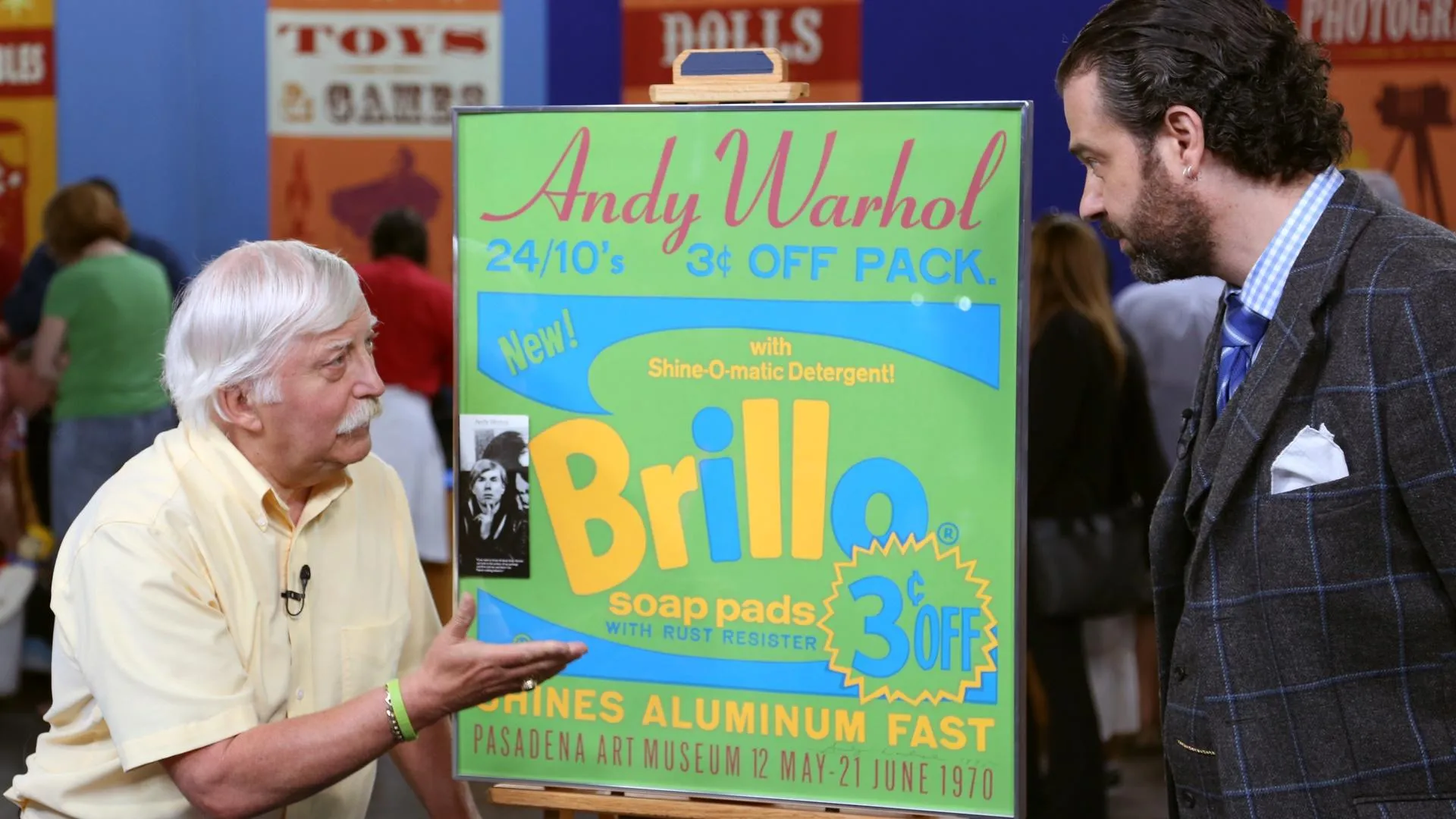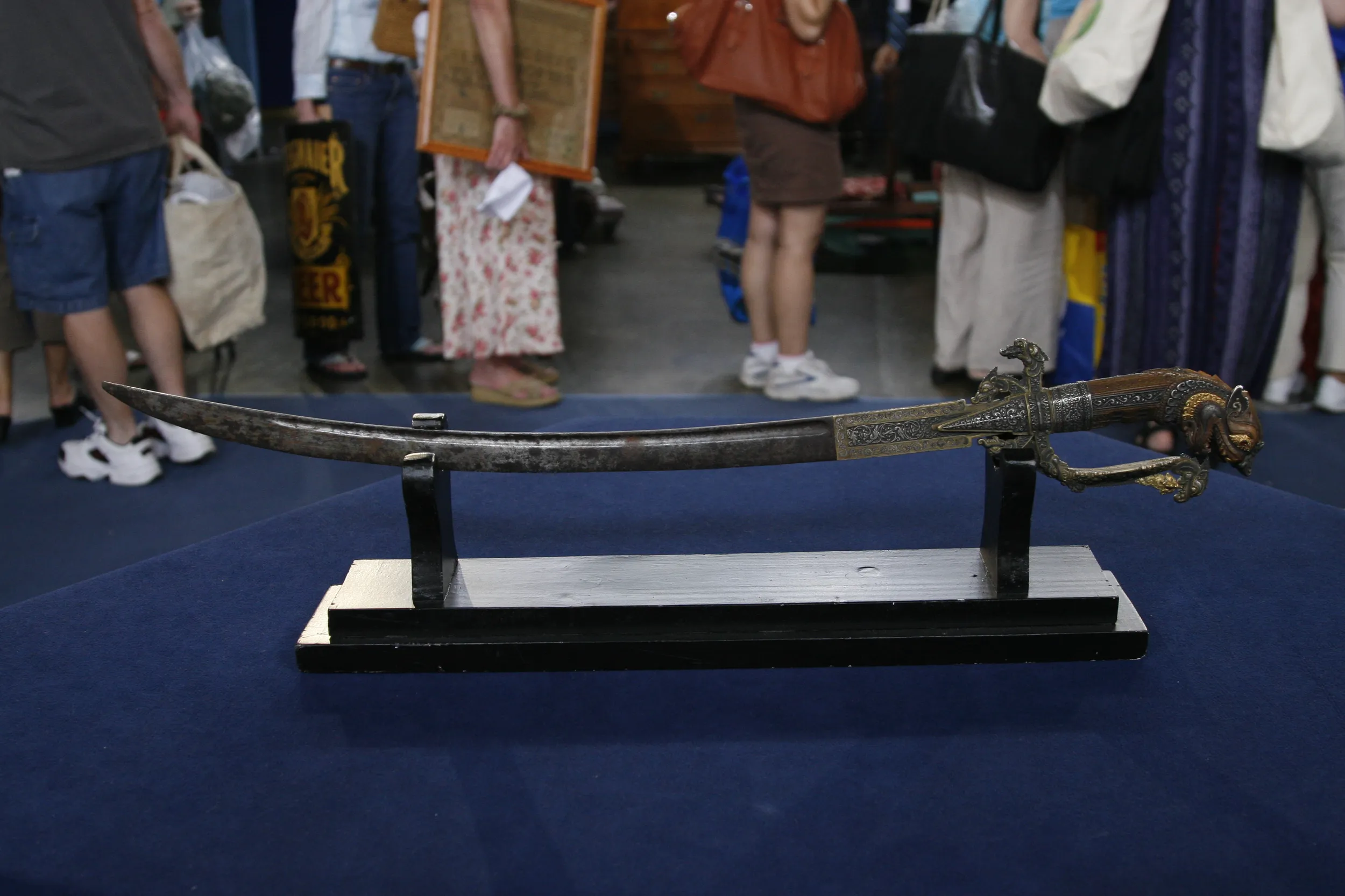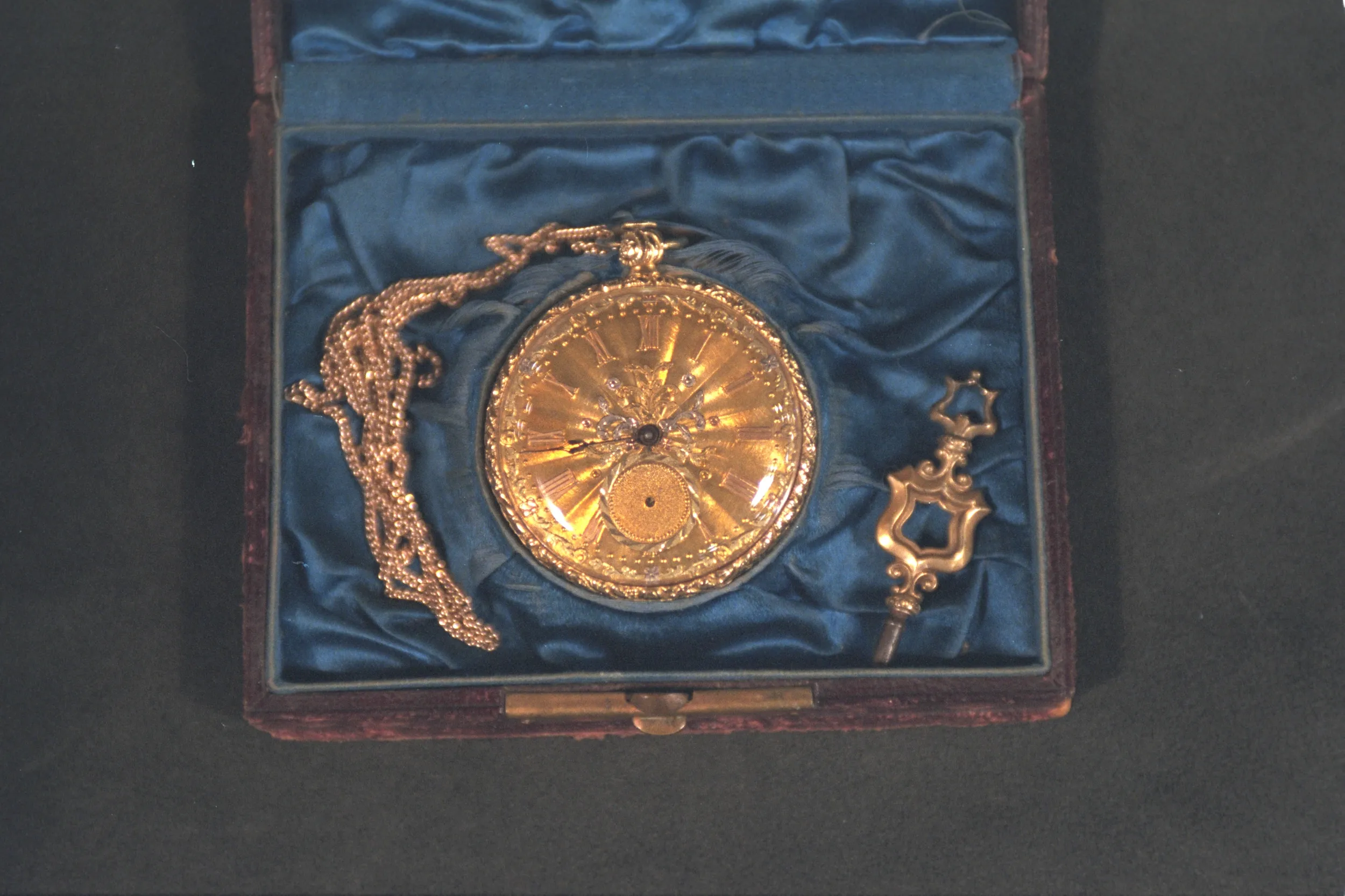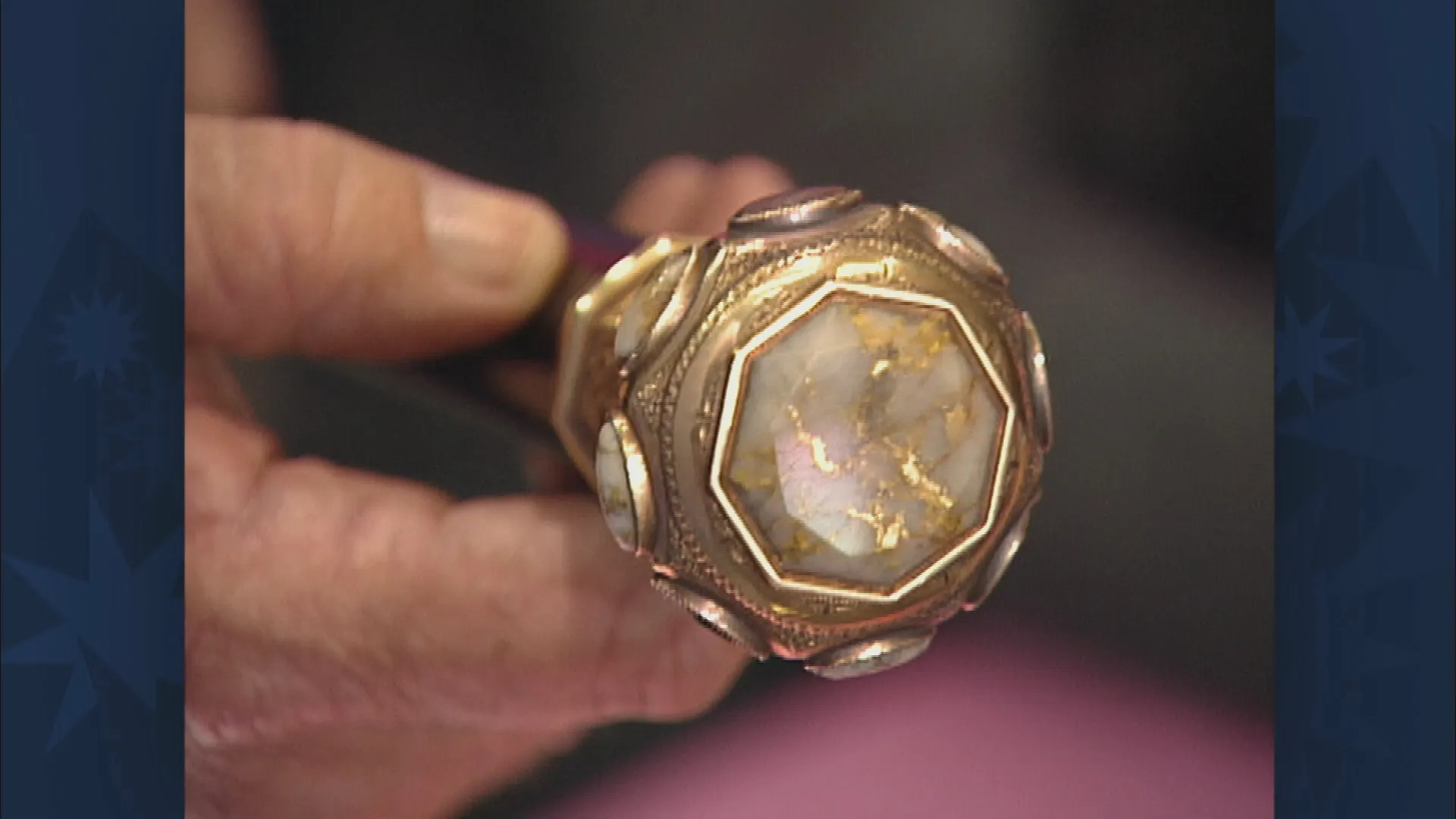GUEST: I was very blessed to inherit this necklace from my great-aunt Mimi. She was born in Scotland in Motherwell. She was one of ten children and moved to the United States and moved to Chicago, where she had an insulation company, and then she moved to the Los Angeles area, where she became a realtor in Venice, California. She was a realtor to the stars: she was always wearing the glitz and the glam and was always mentioning this movie star or that movie star. She entertained a lot. When she passed away in 1994, she had no children, and I was the lucky niece that got this necklace and earrings and beautiful ring. I've always admired it, and I've never known anything about it.
APPRAISER: Aunt Mimi, she did some unusual things in the day for a woman, right?
GUEST: She did! She was quite brave and adventuresome. She got her pilot's license in the 1930s.
APPRAISER: So she was a woman to be dealt with and she would never take no for an answer, and I think maybe her jewelry shows a little bit of that too. You brought it in and you thought it was what?
GUEST: I thought it was costume jewelry. To me, it's pretty much over the top, so I didn't think anything like this could be real, and I know there's still a market for costume jewelry.
APPRAISER: Sure there is. It's not costume jewelry.
GUEST: Seriously?
APPRAISER: Seriously. It's real-- genuine, as we say. But it's interesting. The yellow stones are citrine. Now, citrine in itself is not a terribly expensive stone. It's one of those stones when they're matched up so nicely like this, it's a beautiful color and it creates a great look. And this is what we call a demi-bib, a kind of bib necklace, but it's a little shorter. You see the citrines and then you see the diamonds accenting it, but when I tested them, they're not diamonds.
GUEST: Oh.
APPRAISER: But they're not glass. They're white sapphire.
GUEST: (gasps) Seriously?
APPRAISER: Yeah, so it would be great if they were diamonds, but they're white sapphire-- still very good.
GUEST: Oh, my God!
APPRAISER: I tested the gold.
GUEST: I saw you doing that, yeah.
APPRAISER: And I didn't tell you anything, of course. You would expect a piece like this to be an 18 karat, maybe 14 karat gold, but it's not. It was strange, and I tested it a couple of times. It's nine karat, so it's a low karat gold, so that starts telling us where the piece was made. We think this piece was made in South America. I would think that a piece like this was probably made sometime between 1935 and 1945.
GUEST: Really?
APPRAISER: So it really falls into this land between great, real jewelry, it's not costume, it's kind of in between. But it's a fabulous piece. You've got great drop earrings to match it, and then to cap it off, you've got a great ring. I would sell this as a suite-- in other words, the necklace, the earrings and the ring. Not the kind of thing I'd want to break up. You keep it all together. So if you put it into an auction, this would go into the catalog for $3,000 to $4,000.
GUEST: Oh, my gosh, really?
APPRAISER: Yes, it certainly would.
GUEST: Yo! I can't believe it. That's wonderful, thank you.
APPRAISER: You might have to wear it out to dinner...
GUEST: I might have to wear it a few more times.











